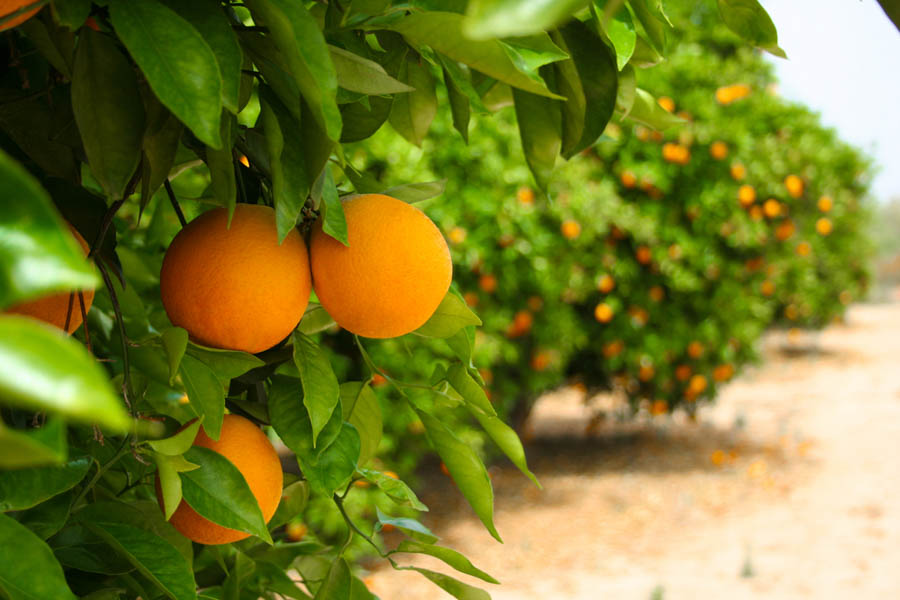Maintaining Citrus Trees in the Spring: 6 Tips
April 14, 2018
Author: Ann Clary
Made with Sunshine: Growing Citrus in California / The Mighty Garden Archive

Tips for maintaining citrus trees in the spring can be difficult to simplify, as many but by no means all citrus trees produce mature fruit during the winter. For example, Washington Navel oranges typically mature in mid to late winter in much of Southern California, but Valencia oranges mature later, from spring through summer depending on the location. The following suggestions apply to maintaining citrus trees which produce fruit during the winter and new growth and blossoms in the spring.
- Do remove any remaining fruit from last season’s crop. Removing the remaining fruit encourages citrus trees to begin to produce next year’s fruits, but leaving fruits on the tree delays that process.
- Do prune citrus trees to remove dead, diseased, weak, or crossing branches; watersprouts; and rootstock suckers.
- Do prune citrus trees to maintain desired shape by making heading cuts on a limited number of carefully selected branches. Avoid removing significant portions of the leaf canopy.
- Do not use powered hedge trimmers to “buzz-saw” the edges of your citrus trees in an effort to control new spring growth and maintain desired shape. Citrus trees fruit on new wood; that is, blossoms and therefore fruit occur on new growth. The flowers you might cut without thinking are your future fruits! Prune to encourage the production of fruit, not to remove it. For more information on pruning citrus trees, see Pruning Citrus Trees, the Why, the When and the How.
- Do not prune citrus trees during periods of hot weather. Both heat and pruning stress plants. Don’t over stress your plants by doing both at the same time.
- Do not fertilize or add iron to the soil around your citrus trees without knowing your soil pH. Citrus trees like soil more acidic than is often found in many home gardens in California and other areas. Soil nutrients become unavailable to citrus trees, even when present in the soil, when soil becomes too alkaline. The best solutions are to encourage a thriving, healthy soil ecosystem that will naturally improve pH; or to provide acidity to soil by mulching with face-down cut halves of waste citrus, watering with diluted vinegar at proportions of about 1/4 to 1/2 cup of white vinegar in 2 gallons of water, or using an acidifying product such as pH Reducer. To determine the pH of your soil, see Tips for Testing Soil pH with a Soil Test Meter.
GardenZeus has customized gardening information by plant and zip code. To get started, enter your zip code here.